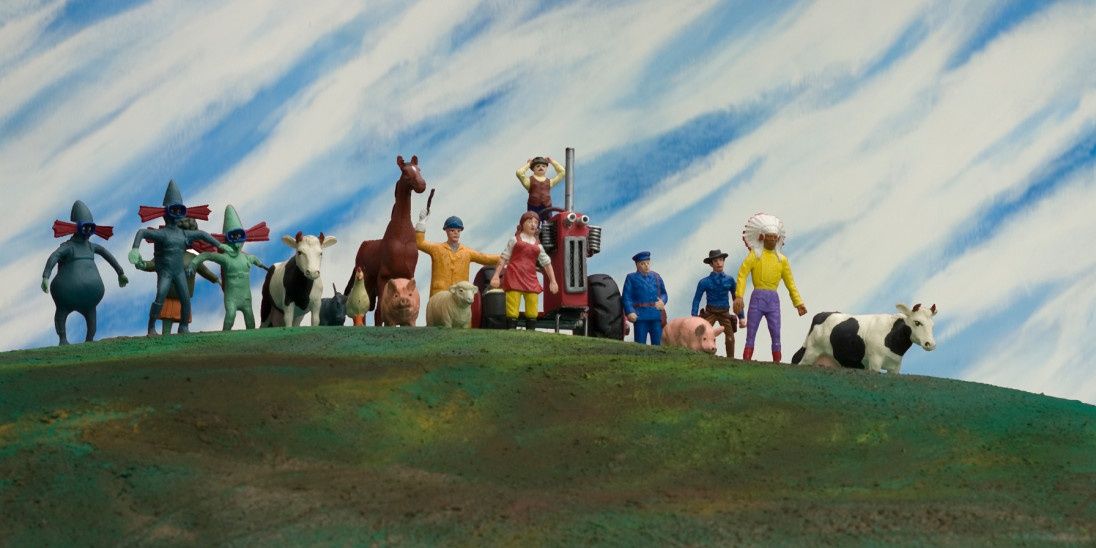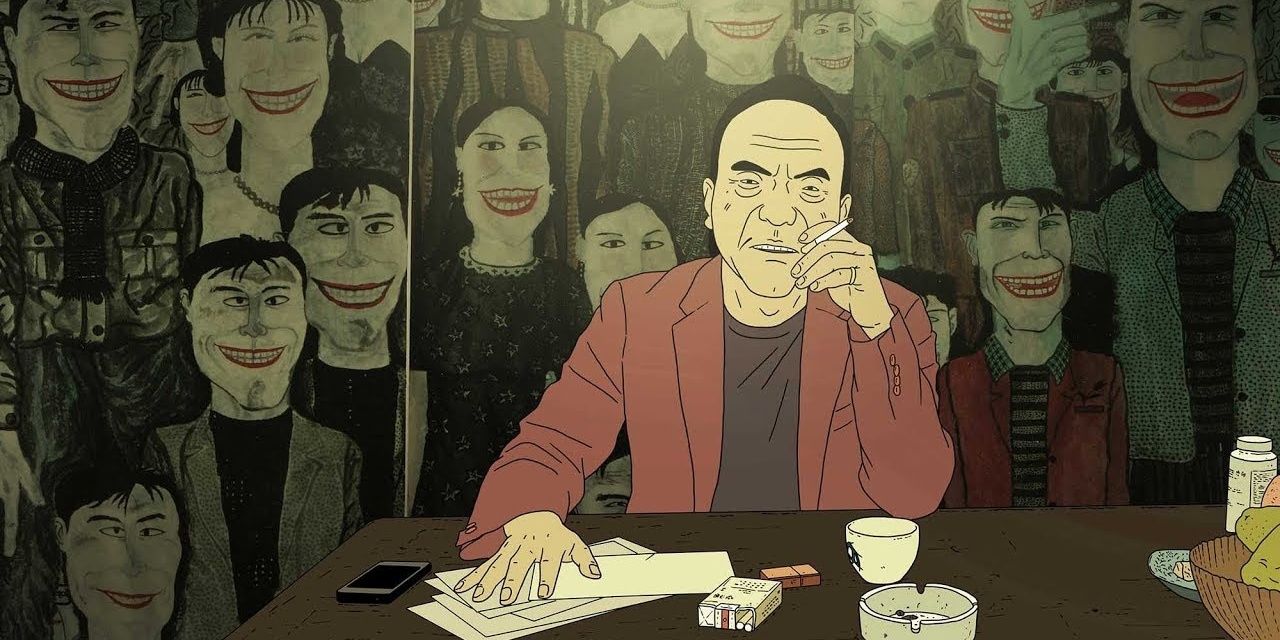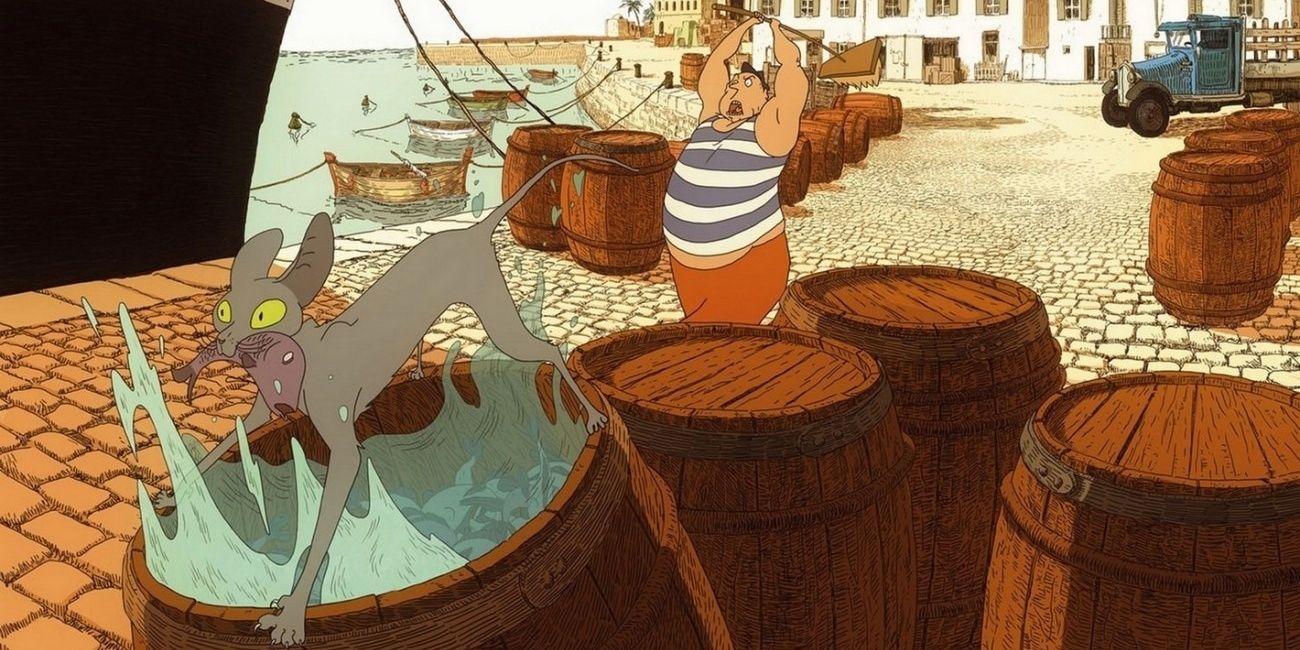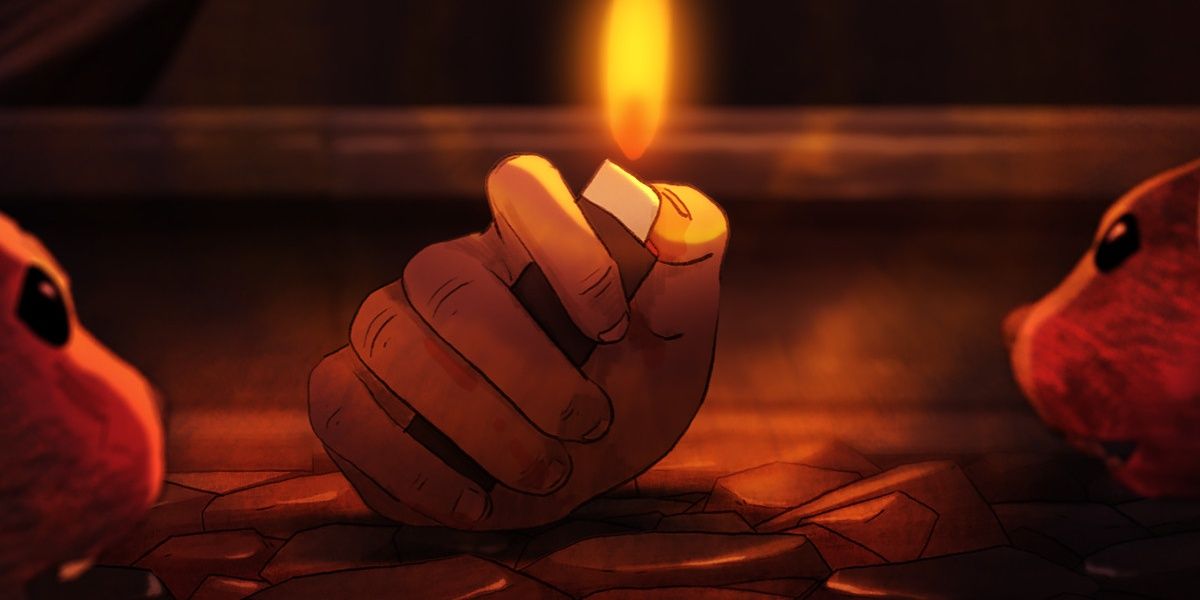When one thinks of foreign-language, animated features, one studio comes to mind; Studio Ghibli. Hayao Miyazaki's films have become so ubiquitous in animation that it’s easy to forget so many other unique voices out there in world cinema bringing a creative spin to the animated art form.
You may have already seen non-Ghibli animated classics like Persepolis, Akira, or Fantastic Planet (you should check those out if you haven’t), so here is a list of foreign language animated flicks that lovers of animation may not have seen, but won’t want to miss.
The Seven Ravens (1937)
A movie with a special place in celluloid history, The Seven Ravens is one of the first animated features ever. It was created by German animation pioneers, The Diehl Brothers, and is the first animated film based on a Grimm fairy-tale, beating out the release of Snow White and the Seven Dwarfs by under a month. A stop-motion picture, much of The Seven Ravens is crude by today’s standard. However, some movements, especially those illustrated in wide shots and the lute-plucking scenes, are incredibly fluid and precise.
The directors do not shy away from some of the more brutal and consequential aspects of the Grimm parables. Unfortunately, it is one of the few Diehl Brothers films that can still be seen. Since WWII, most of their projects have been considered lost. The Seven Ravens is a fascinating piece of film history, and most remarkably, not one that feels like a chore to sit through. Luckily you can find the full film on YouTube, if you have an hour, treat yourself to one of the forebearers of cinematic animation.
Krysař AKA The Pied Piper (1986)
Czech director Jiří Barta’s feature film debut is a strange masterpiece. All the dialogue in the movie is gibberish, as the movie relies mostly on its striking visuals to tell the story. The film is an adaptation of the classic tale The Pied Piper of Hamelin, yet thanks to the unique wood-worked character models and impressive set design, Krysař becomes an entirely distinctive work of art in its own right. The carpentry is top-notch, and the slanting architecture and gothic angles are a fun homage to German expressionism of the early 20th century.
Krysař explores themes of greed and societal decay. The upper-class figures are wretched, voracious monsters whose selfishness leads to their demise. There is so much character to every element in this movie. Even the rats are full of personality. The score is an eclectic mix of orchestral strings, woodwind flutters, bombastic organs, and chaotic electric guitar that keeps viewers in an anarchic headspace throughout. It’s a breathtaking, inimitable experience.
The Tower (2018)
Norwegian director Mats Grorud is at the helm of this 2018 feature about an 11-year-old Palestinian girl’s quest to learn about her family’s history. Our protagonist, Wardi, is curious about how her family came to live in a Lebanese refugee camp. Through the retellings of family members and friends from generations past, Wardi learns about Al-Nakba, (“The Palestinian Catastrophe”) a mass exodus where over two 3rds of the Palestinian population were displaced, often living generations in UNRWA camps. The viewers are privy to the impact Al-Nakba has had on Wardi’s community in the 70 years since.
The Tower is a brilliant example of how movies are an essential tool in elucidating real-world stories and promoting empathy. The Tower incorporates claymation, 2D animation, real-life photographs, and video footage to illustrate the various struggles faced by refugees. It’s a film about guilt, generational trauma, and the significance of maintaining hope, even when all seems lost.
Waltz with Bashir (2008)
When giving an interview about his film Waltz with Bashir, director Ari Folman said “War is a very bad acid trip”. This line perfectly encapsulates the experience one gets out of this 2008 Israeli animated war documentary. The movie follows Folman, interviewing fellow veterans, trying to recover his memories from the 1982 Lebanon War, specifically the Sabra and Shatila massacre carried out by a far-right Christian militia. Despite the cruelty we witness throughout, there’s a morbid sense of humor to Waltz with Bashir. The soldiers are boys, so paranoid that they shoot blindly into pitch dark nothingness on the off-chance enemies could be lurking. It’s a testament to the waste, senselessness, and detachment that are inevitable by-products of war.
The music by Max Richter is profound, and the visuals are haunting, yet beautiful. Like Apocalypse Now before it, Waltz with Bashir’s potent lighting and shadows heightens the nightmarish aspects of the conflict. The animation illustrates Folman’s uncertainty, as well as the illusory nature of memories. It also serves as a shield, allowing Folman to depict the atrocities without watering them down. At the end of the film, Folman smash-cuts to real-world footage of the massacre’s aftermath. We may see the violence through an animated lens, but the emotional trauma and human victimization are real and unavoidable.
Paprika (2006)
Satoshi Kon's sci-fi detective movie Paprika is, for lack of a better term, absolutely wild. This anime about a device that allows the operator to enter and control other people’s dreams came out 5 years before Inception, and the influence Paprika had on Christopher Nolan’s film is apparent. It’s the perfect subject for the animated medium, and Paprika takes full advantage of the weird and wacky universe. Not only are the visuals insane and colorful, but the animators perfectly capture dream logic, an aspect where Inception falls short.
The character designs are exaggerated and engaging, especially that of gluttonous scientist Doctor Kōsaku Tokita, a once-in-a-generation genius who is still a kid-at-heart. What gives Paprika so much dimension is the existential questions it raises about our collective unconscious and how malleable our minds are. There isn’t much swearing or blood in Paprika, but thematically it’s disturbing, and certainly a film for adults. It may take a few views to appreciate, but Paprika is a special film that challenges its audience.
A Town Called Panic (2009)
The title says it all. There’s almost no use going into detail about the plot of this chaotic 2009 spinoff of the 2002 stop-motion sitcom Panique au village. Our three leads are plastic toy characters named Horse, Indian, and Cowboy, who live together. When Indian and Cowboy forgets Horse’s birthday, a series of absurd, convoluted events are set into motion, growing increasingly ridiculous as the flick progresses. Gravity, logic, and scale are all thrown out the window in this wild ride with no other ambition than to make the audience laugh and have a fun time.
Few films are as frantically paced as A Town called Panic, hence why Empire Magazine dubbed it “Toy Story on Absinthe”. Belgian directors Stéphane Aubier and Vincent Patar would go on to be nominated for an Academy Award for their critically acclaimed follow-up Ernest & Celestine, another foreign animated film that deserves your attention.
Have a Nice Day (2017)
Have a Nice Day is a dry, dark comedy by Chinese writer-director Liu Jian, who completed the film over 3 years working almost entirely by himself. The lead character, Xiao Zhang, is a low-level gang member who steals a bag of money from his mob boss to fix his girlfriend’s botched plastic surgery. Along the way, he comes across a variety of low-level thugs, con artists, and opportunists desperate to get their hands on the cash. The animation is far closer to what you would expect from a YouTube video than a theatrically released movie, but there is a clear love imbued into the film due to the passionate work of Jian.
Have a Nice Day is a love letter to American crime films by the likes of Tarantino and The Coen Brothers, not to mention Zhang’s motivation is very similar to Sonny from Dog Day Afternoon. The criminals are all varying levels of stupid; they’re pretentious and entirely out of their depth. None of the characters are in control; they are at the whim of coincidence and fate. The music by The Shanghai Restoration Project does a lot of work in maintaining the energy of the film during stretches where little is happening. There are obvious budgetary restrictions on this flick, but the style, atmosphere, and fun characters are enough to keep it engaging.
The Rabbi's Cat (2011)
The Rabbi's Cat is a refreshingly funny exploration of religion and the obstacles humanity still has to overcome to achieve tolerance. The plot revolves around a devious Algerian cat who gains the ability to talk after eating his master’s pet parrot. With his newfound personhood, the cat (who remains nameless) seeks to convert to Judaism to maintain a relationship with the Rabbi’s daughter, Zlabya. A French film designed to be entertaining to adults and challenging to children, The Rabbi’s Cat is full of beautifully rendered 2D imagery that emphasizes the personality of the film’s heightened world.
The strongest aspect of this movie is the cast of characters. Watchers are treated to expressive, quirky players of varying religions and ethnicities, who speak bluntly and passionately about their beliefs. This said, there is nothing preachy about The Rabbi’s Cat, it is not a film that puts religion on a pedestal or makes a case against it. It’s a celebration of the absurdity and incongruity of life and humanity.
I Lost my Body (2019)
Another French film to add to this list, I Lost My Body was nominated for an Academy Award for Best Animated Film, but ultimately lost out to the much safer crowd-pleaser Toy Story 4. I Lost my Body is about a young man, Naoufel, who loses his hand in a carpentry accident. The hand, now self-reliant, wakes up in a medical lab and sets out on an expedition back to Naoufel.
A film of two parallel narratives, the journey following the hand is more interesting and visually exciting than Naoufel’s storyline, which sometimes teeters on the edge of being clichéd, but director Jérémy Clapin does enough to subvert expectations. Though there are shaky elements, the third act ties the elements of the disparate plot together in an unexpected and bittersweet way. It’s a film about letting go of the past and moving forward, even if that requires a leap of faith.

-1.jpg)
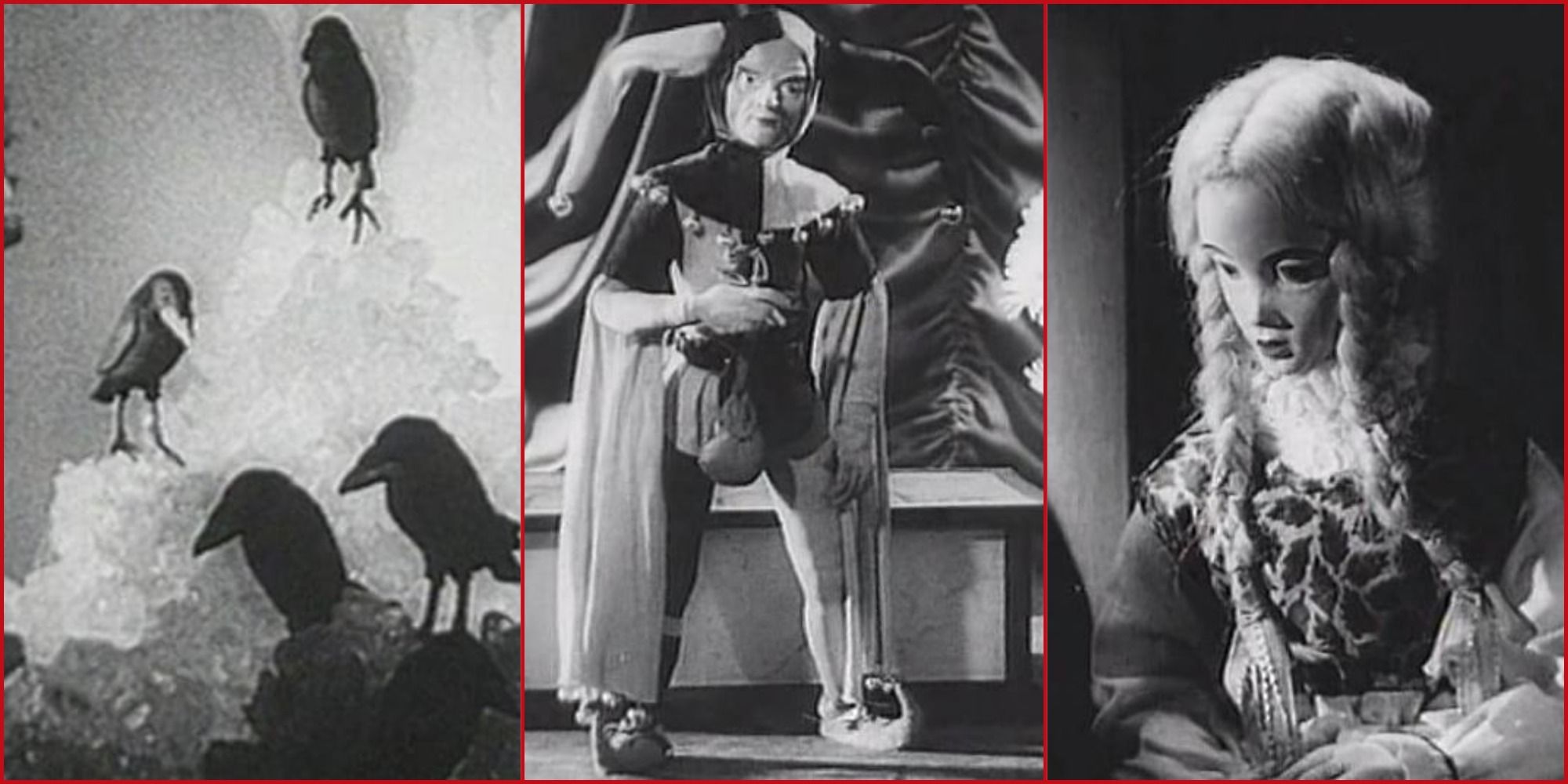
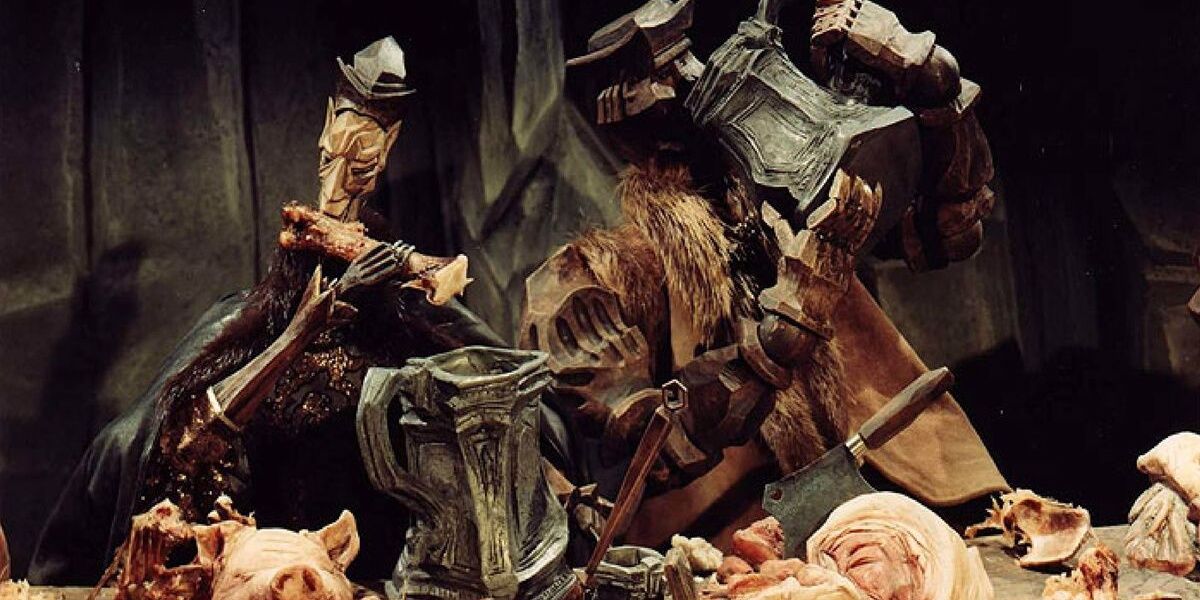
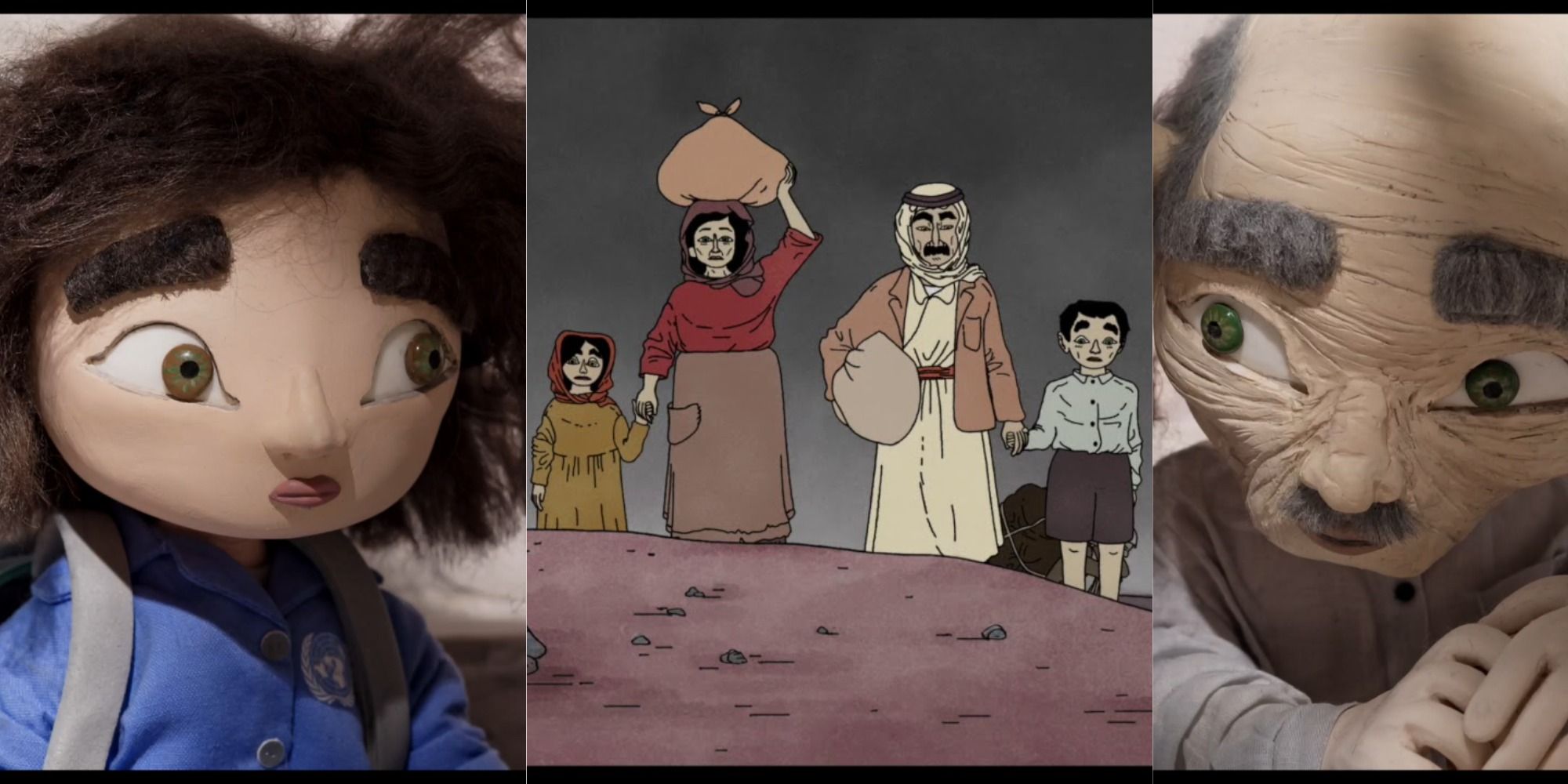
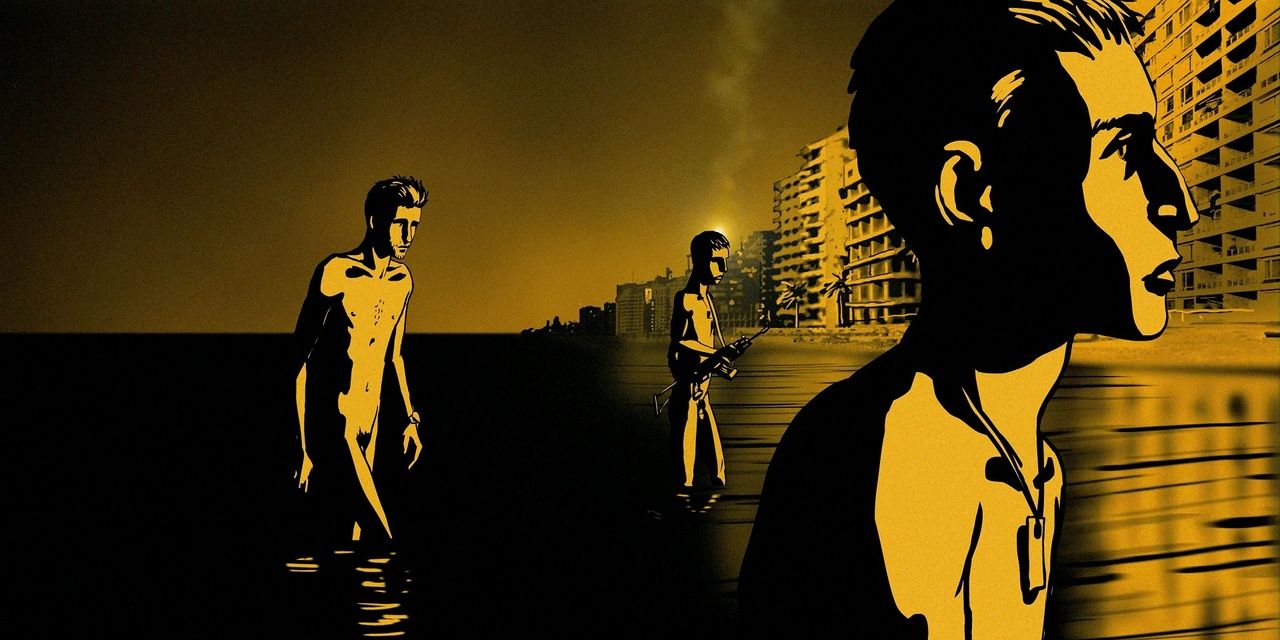
.jpg)
